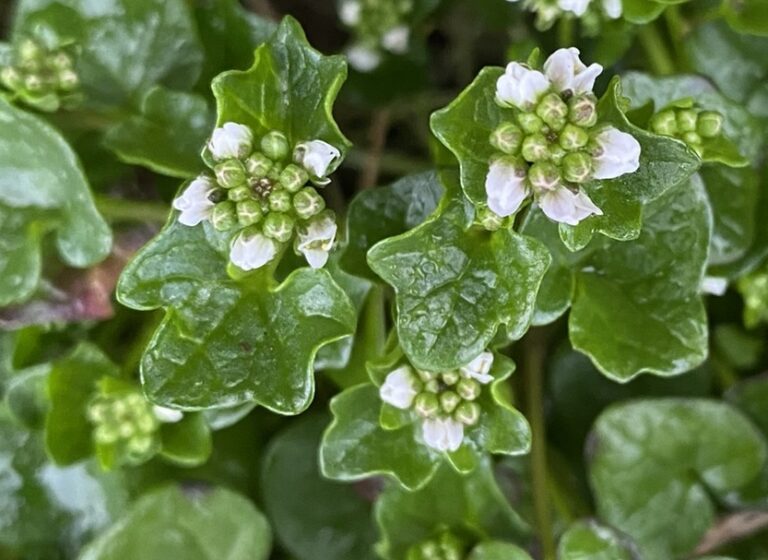Plant count
Thanks so much to everyone who came along to the “On the Verge” Spring wildflower count in the town centre. It was wonderful to meet so many lovely people enthusiastic about botany, and the wildlife that can thrive in these biodiverse green spaces.
We had two recording sheets available, a photo-sheet for beginners to tick off a number of common local plants in flower and leaf, and a more detailed one for each of the two groups, which recorded every plant that we saw, that could be identified by flower or leaf.
We started at the “Covers” fields in College Road, which were also surveyed back on 2 January. We then walked through town centre alleyways to the churchyard ending up behind the Beach garden.
Overall we saw seventeen plants in flower (only 4 more than in January!)
Leaf it out!
When you first start learning to identify plants, it is natural to look at the flowers, but it’s really important to also look at leaves and stems, sometimes even roots too. As you get more experienced you then start to be able to spot species before they come into flower from their leaves, old seed heads or other characteristic.
As we had a wonderfully keen and knowledgeable team, we were able to spot leaves from a total of 47 different species!
Danish Scurvygrass – a common species in Seaford
One of the most common plants flowering at this time of year, is Danish Scurvygrass (Cochlearia Danica) which is a salt loving plant, common by the coast, but also anywhere that roads are salted in the Winter. In a lush verge, it can have quite large waxy leaves, but on the shingle at the beach, it is the beautiful delicate pink or white flowers that steal the show.
Geraniums – a bit more tricky!
One of the flowers spotted was a geranium. You may well be familiar with the shape of a geranium leaf, from those in your garden or parks. There are however a few tiny geraniums that flourish in our recreation fields. It’s easy to miss them.
The one recorded was a Dove’s foot geranium (see photo above) and there are various features you need to check to confirm an identification! These include the shape of the leaf, the length of the petals, whether the petals are complete or if they have a notch/dip at the top, whether the stem is just downy, or whether it has long hairs, and whether there are anthers (tiny pollen sacs) at the end of all the stamens (male organs of the flower) or just some.
To confirm all that you would probably need a hand lens or other magnifier, a ruler, a good book (We usually work from Francis Rose Wild Flower key) and some patience!
If you come on one of our flower walks, we have equipment we can lend you, and can show you how to use them. We are all learning, so don’t be shy!
Judy
A warning – do not be misled..
Leaves and flowers do not always go together!
Above right are the leaves of Dovesfoot Cranesbill (Geranium molle) which are carpeting the grassland of The Covers and the Martello Fields just now.
The flowers of Red Dead Nettle have to grow up through them and, if you don’t recognize them, it is easy to be misled
Brian
Seaford On the Verge, run wildlflower walks, surveys and other events in the town. Find out more on our website Seaford on the Verge








